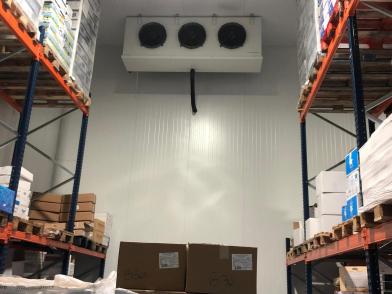

How to ensure food refrigeration in cold storage facilities
Experts want to improve product conservation to avoid losses from weight shrinkage, cold damage and other defects, as well as optimise organoleptic qualities. The focus is on aspects such as conservation of tuna at temperatures below -60 °C, meat maturation, and the production of fruits at their optimum ripening point.
Storage is intended to overcome the delays between a product’s production, distribution and demand, meaning that it must be designed to ensure that the product does not deteriorate over long periods of time. Conservation conditions are critical in achieving this goal. Javier Cano Cavanillas, member of the Governing Body of the Spanish Association of Refrigeration Technology Companies (AEFYT), explains that ‘each product has its own temperature and humidity requirements, while some need controlled atmospheres, as is the case with fruit and vegetables, where controls on the levels of ethylene or CO2 are often needed’.
According to the expert, ‘with the growth in the international transportation of refrigerated goods, long-term storage is no longer as necessary as controlled-atmosphere storage to extend the life of products well beyond their season. The focus is now more on improving the quality of product conservation, not only to avoid losses due to weight shrinkage, cold damage or other defects, but also to optimise organoleptic qualities. This applies to the conservation of tuna at temperatures below -60 °C, meat maturation, and the production of fruits at their optimum ripening point’.
In a global context, refrigeration also needs to be adapted to trends in the food distribution sector, in step with the boom in e-commerce, for example, as well as emerging needs in the pharmaceutical sector, such as new medicines that require special conservation conditions.
Changes in refrigeration methods
Javier Cano, who is also Deputy Director-General of the company Intarcon, reminds us that fixed refrigeration systems in warehouses and cold storage are regulated by the Safety Regulation for Cold-Storage Facilities, RD 552/2019, which transposes the UNE EN-378 standard and also includes a section on minimum requirements for cold storage. ‘Fixed refrigeration involves highly diverse technology and system types so that it can be adapted to the specific needs of each product’.
According to the expert, the refrigeration sector has seen significant changes in refrigeration methods over the last decade, mainly due to environmental policies that restrict fluorinated refrigerants. ‘This has led to a rethinking of many concepts, from the refrigerant itself right through to the refrigeration systems’. In fact, fiscal and environmental policies ‘are pushing the sector to migrate toward low GWP refrigerants, such as the new A2L flammable synthetic refrigerants and natural refrigerants such as propane, CO2 and, of course, ammonia’. But equally important is the development of systems that allow the use of these new refrigerants. ‘This trend has, for example, led to various configurations of CO2 systems, as well as indirect propane and ammonia systems which use secondary fluid cooling circuits, and low-charge ammonia systems’.





